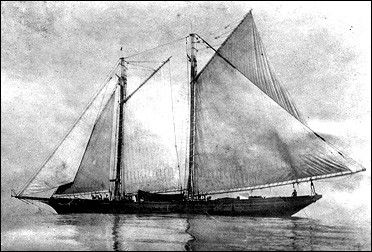And the difference is…
So the peripatetic antics of The Legal Genealogist lead to northern Virginia tonight… and the annual dinner of NIGRAA — the National Institute on Genealogical Research Alumni Association.
The Institute, known as NIGR (pronounced NY-jer), is a week-long program at the National Archives in Washington D.C. and College Park, Maryland. It’s described on its website as “an intensive program offering on-site examination of federal records.”1
And, the website continues — with emphasis: “Designed for experienced researchers, it is not an introduction to genealogy.”
That, as a one-time sister-in-law of mine used to say, is a True Fact.
I know.
I had the great good fortune of attending NIGR in 2010, and there’s no truth-in-advertising issue here: intensive, it is; introductory, it is not.
And it is wonderful.
An entire week totally immersed in federal records and both the more common and lesser known resources of the National Archives, and, every year, the Institute ends with the Alumni Association dinner.
Which caused me, this year, to ask some questions. Such as… what’s the difference between a brig, a schooner and a cutter?
Because I have the honor of speaking tonight at that NIGRAA dinner… and the topic involves tales of some of our seagoing ancestors.
I’m not going to give anything away, but…

A brig, which is not the same thing as a brigantine, is “a sailing vessel with two square-rigged masts. During the Age of Sail, brigs were seen as fast and maneuverable and were used as both naval warships and merchant vessels. They were especially popular in the 18th and early 19th centuries.”2 |

A schooner was “a type of sailing vessel with fore-and-aft sails on two or more masts, the foremast being no taller than the rear mast(s)…. Schooners were further developed in North America from the early 18th century, and came into extensive use in New England. The most common type of schooners, with two masts, were popular in trades that required speed and windward ability, such as slaving, privateering, and blockade running.”3 |

And a cutter was “a small, decked ship with one mast and bowsprit, with a gaff mainsail on a boom, a square yard and topsail, and two jibs or a jib and a staysail.”4 |
Now the people who manned them…?
That’s a subject for dinner conversation…
SOURCES
Images:
Brig: Lance Woodworth, “Brig Niagra full sail,” CC BY 2.0.
Schooner: United States Navy, USS Arabia
Cutter: U.S. Coast Guard, The Eagle.
- National Institute on Genealogical Research ( : accessed 17 July 2014). ↩
- Wikipedia (http://www.wikipedia.com), “Brig,” rev. 28 Apr 2014. ↩
- Wikipedia (http://www.wikipedia.com), “Schooner,” rev. 9 July 2014. ↩
- “Coast Guard History, Frequently Asked Questions, ‘What is a Cutter?,’” United States Coast Guard (http://www.uscg.mil/ : accessed 17 July 2014), citing Peter Kemp, editor, The Oxford Companion to Ships & the Sea (London: Oxford University Press, 1976) 221-222. ↩


